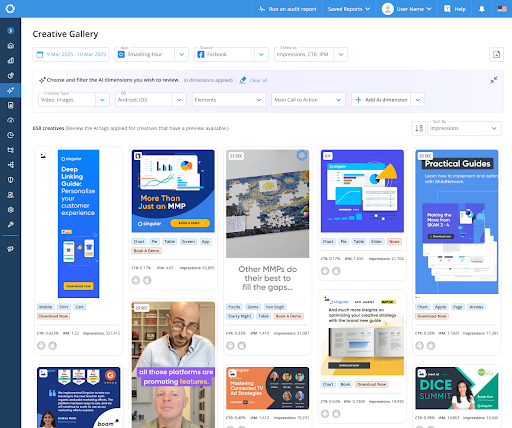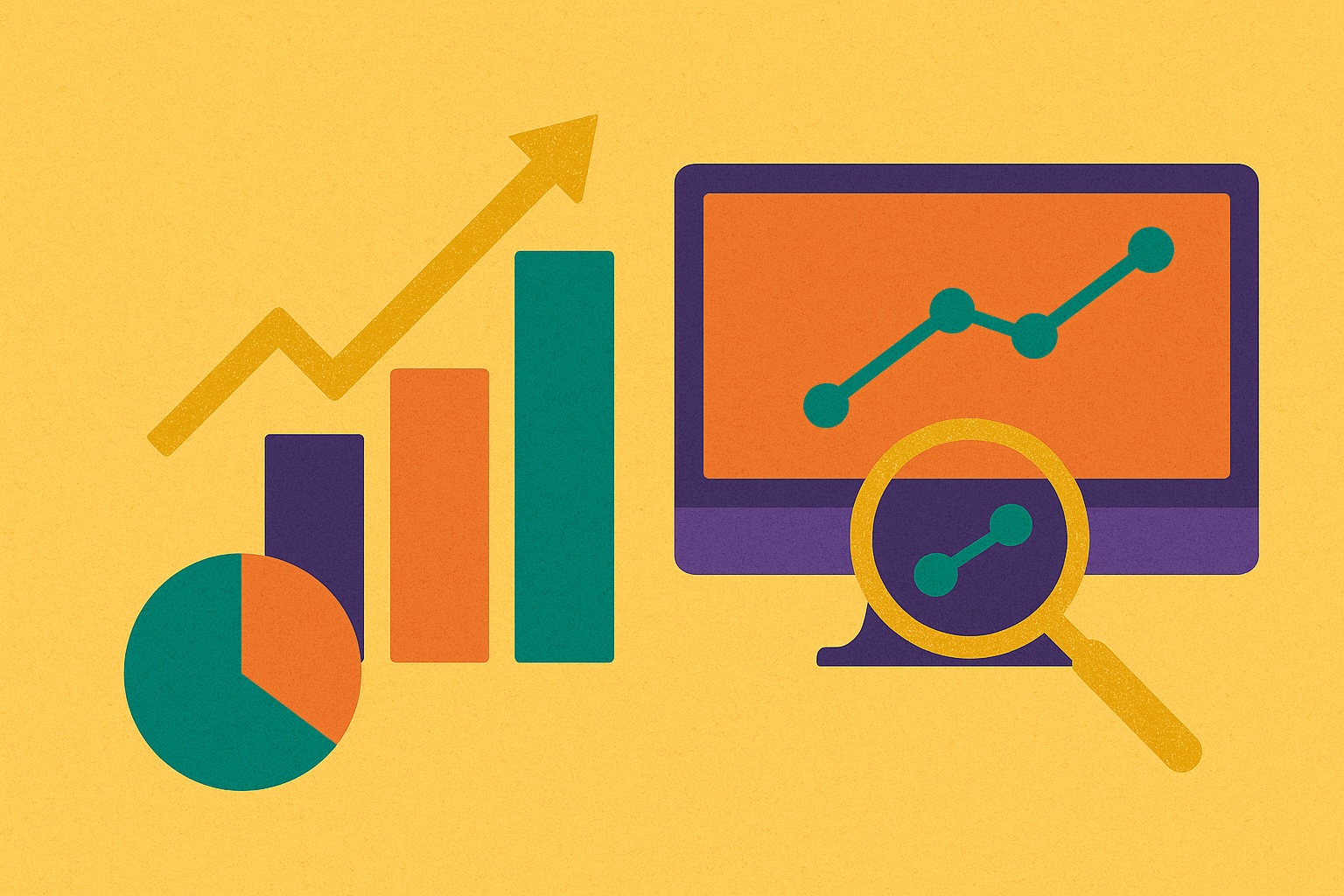Content
Stay up to date on the latest happenings in digital marketing
It’s probably a controversial statement, but we’re entering a golden age of marketing measurement right now. Not an easy age, necessarily, but a golden age.
I’m not sure you had it on your Bingo card for 2025. I didn’t. And it’s something probably no one thought would happen 4 years ago.
I recently chatted with Singular CTO Eran Friedman on this. We touched on the challenges and opportunities in this new reality in our recent megapanel on the state of marketing measurement with Hannah Parvaz, Sara El Bachri, and David Vargas.
But we haven’t really clearly laid it out until Singular CEO Gadi Eliashiv talked about this in his recent keynote at ChinaJoy.
Masses of data, from multiple sources, tied together with smart AI-driven analytics.
Check it out here:
Thanos and the golden age of marketing measurement
Of course, we have to start with a point in time, 4 years ago.
It’s hard to talk about marketing measurement without revisiting the moment that Apple’s privacy moves changed everything. ATT and iOS 14.5 dropped like Thanos snapping his infinity-stone-enhanced fingers … and half the marketing measurement universe kinda just disappeared.
On iOS it felt like 90% of our user‑level signals disappeared overnight.
(Mostly because that’s exactly what happened.)
Naturally, there was a lot of doom and gloom.
- Was performance marketing over?
- Would cohort analysis, ad optimization, and ROI modeling go away
- Was reliable attribution over?
And in the years that followed, it looked like Android would follow a similar pattern with Privacy Sandbox. (Which has been very muted lately!)
But now we have our answer.
Yes, the rules changed. Yes, tactics evolved. But also, the ecosystem adapted. Platforms opened new pipes, analytics got smarter, and marketers learned to stitch together many signals instead of leaning on just one.
And the end result of Thanos’ snap is a new golden age of marketing measurement.
We went from a data drought to signal abundance
What looked like scarcity — and originally was scarcity — has become a kind of abundance.
But only if you know where to look. If you can catch all the signals. And if you can intelligently combine them:
- Open internet & device signals
On iOS, you still have SKAN, IDFV, and meaningful first‑party data. On Android, GAID, referrer, and first‑party data continue to matter. And don’t forget the humble IP address and user agent when used responsibly. - The big platforms’ data
Meta, Google, TikTok, Snap, X and others now share more aggregated and modeled performance signals than ever before. Meta’s AMM is back. Google’s ICM is here. Deterministic joins might be rarer, but probabilistic and modeled insights are richer.
From the big platform side, it looks like this:
Platform | Modeling | Data sharing with MMPs | Unique aspects |
Meta | Yes | Touchpoints, claimed installs via AEM, Advanced AEM, AMM | Significant data sharing increases recently |
Yes | Touchpoints, claimed installs, on-device measurement | New: Integrated Conversion Management | |
Tiktok | Yes | Touchpoints, claimed installs via Advanced SAN | Recent: Advanced SAN |
Snap | Yes | Touchpoints, claimed installs via Advanced SAN | Recent: Advanced SAN |
Apple | No | SKAN data, with nulls/deletions for privacy | On-device measurement; Apple Ads API |
Other ad networks | Depends | Click & impression data, IDFA/GAID when available | Traditional MMP attribution |
From the open internet, ad network, and device signals side, it looks like this:
iOS | Android |
IDFA | GAID |
IDFV | Referrer |
SKAN | Ad network data |
Ad network data | IP address |
IP address | First-party data (in-app, requested account data including for messaging, etc) |
First-party data (in-app, requested account data including for messaging, etc) |
The result: more sources, more coverage, and more opportunities to triangulate truth.
This all adds up to a sturdier foundation for growth
Thanks to that broader signal set, growth teams can now assemble a durable measurement base:
- They can unify data
Use clues from platforms, partners, and your own first-party data into a single reliable attribution model … Unified Measurement. - They can answer core questions
Get CPI, CAC, LTV, and ROAS dependably across both Android and iOS. - They can measure at the right level of granularity
Drill down when you want to, and roll up when you need the big picture. - They can layer on prediction and modeling
Build high‑resolution views where user‑level data isn’t available.
With that foundation, analysis is less a random archaeology dig and starts feeling like product engineering again.
And arguably, it’s a more contextualized, nuanced, balanced, and reliable view of attribution and marketing measurement than the previous model, which essentially relied very heavily on just 1 signal: IDFA on iOS and GAID on Android.
Golden age of marketing measurement, meet AI
All of that foundation is what our increasingly capable AI models can now feed on and generate ever-more-powerful insights.
This isn’t a bolt-on: it’s now embedded in how marketers ideate, operate, and optimize. Three practical examples:
Creative intelligence in Creative IQ
In a world where bidding levers are increasingly automated, creative is the one you can still pull yourself.
(For now: creative will increasingly get automated at the platform level.)

But whether you make it or you offload that to generative AI, you still need to know how it performs.
The Singular approach, Eliashiv says, pulls every asset from every channel into one system, then uses AI to understand them: audio, visuals, text, colors, characters, elements, even language. Creative IQ maps those attributes to performance so you can see not just what wins, but why.
“Now we can use AI to understand why this creative is working so well. Is it the language? The characters? The tone, the colors, the soundtrack?”
– Gadi Eliashiv, Singular CEO
The upshot: faster iteration cycles, smarter briefs, and a shared creative language across UA, design, and leadership. Because now you don’t just know which individual creatives are winning. You also know why. And that knowledge allows you to make more like it.
AI that helps you set up measurement: Singular Copilot
Ad networks and platforms are powerful. With that power comes complexity. And measurement platforms like Singular have to live in that complexity and make it manageable.
How?
With AI help.
Configuring partners, tracking links, postbacks, re‑engagement windows, cross‑device settings … there’s a lot both to know and to do as a growth marketing expert. So we’re embedding a context‑aware assistant directly inside the product: Singular Copilot.
You can ask, “How do I set up a tracking link” and it won’t just answer. It will take you to the right screen, highlight the right fields, and guide you through every step of the setup. Essentially, it’s a smart agent that understands both your question and what is happening on your screen.
This is a bridge to a future where less is configured manually and more is orchestrated by intelligent systems.
Optimization engines that never sleep
Our new ELT product, Extract, moves raw marketing and store data and much more into your warehouse quickly, easily, efficiently.
(And yes, there’s still a Singular marketing ETL tool!)
Some of the largest game publishers use it to query the App Store and Google Play every 15 minutes, check installs, analytics, and rankings, and automatically adjust their spend and bids. Paired with modeled conversion signals from ad partners, these loops create near real‑time allocation engines for UA and re‑engagement.
“They’ve started automating their user acquisition and re‑engagement work … choosing where to allocate budget, which creative to generate, writing their own text for creatives, and choosing bids.”
– Gadi Eliashiv, Singular CEO
The common denominator across all three of these? A strong, complete, and accurate data foundation.
AI multiplies your impact only when the inputs are consistent, rich, and trustworthy.
What this means for marketers right now
Measurement is back. The golden age of measurement is here.
But only for those who are ready for it, and are collecting the multiple data points you need to unify attribution from all the different signals.
So what should you do?
- Audit your signals
Inventory what you have (SKAN, GAID/referrer, first‑party, partner‑provided modeled events) and what you’re missing. Meta’s AMM, for example, is only available if you agree to it explicitly, and you can only get it via an approved MMP like Singular. Close the gaps. - Instrument creative learning
Invest in smart tools like Creative IQ to boost your creative results. AI will help you tag systematically, manage data governance, extract insights, test hypotheses, and feed learnings into generation. - Embed AI into operations
Start with Singular’s integrations with ChatGPT and Claude. Use AI assistants to understand what’s happening, and then reinforce your actions. There are many more tools coming …
A final word: the golden age of measurement?
The last few years have reshaped measurement.
What began as turbulence now feels kind of like a tailwind … if you bring the right data, analytics, and AI to the table. And have some fun.
As Gadi said on stage:
“We are in a golden era right now and I think it’s exciting.



